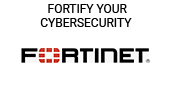
Senior Executives from Juniper Networks have collected their top predictions concerning Service Providers for 2025.
- The 2025 Surge in Open RAN Deployments: AI, Automation, Collaboration and Sustainability
Jai Thattil, Senior Marketing Director, Industry and Sustainability Marketing, Juniper Networks
In 2025, Open RAN (O-RAN) deployments are expected to gain momentum, potentially led by established, brownfield operators —particularly in regions like North America, Europe and parts of Asia. Geo-specific regulatory support and market demands in these areas may further accelerate adoption. The wave will be fuelled by a growing focus on automating O-RAN, with a spotlight on initial Non-Real-Time RIC (Non-RT RIC) and Near-Real-Time RIC (Near-RT RIC) applications aimed at enhancing service quality and optimising network performance while simultaneously driving down energy use (leading to more sustainable business models and carbon reduction program compliance).
As O-RAN standards continue to advance and the broader O-RAN ecosystem introduces more features, we’re set to see a likely spurt in collaborative, AI-enabled applications thriving across networks supported by multiple vendors.
- 2025 will be the year of AIOps driven Automation for Service Providers
Julius Francis, Senior Director of Product Marketing, Juniper Networks
In 2025, we expect to see increased adoption of intent-based, closed-loop automation solutions across all networking segments: Enterprise, Cloud and Service Providers. This adoption will be driven by significantly enhanced AIOps, including AI inference models, generative AI and digital twins. AI inference models will leverage network data in real-time to provide operators with greater, more actionable, insights into network behaviour past, present and even the future. The insights provided by AI-driven predictive analytics will reduce MTTI/MTTR, even for complex issues such as random packet loss. They will also enable new capabilities including adaptive power management, automated root cause analysis and security threat detection. Generative AI virtual assistants will help operators better understand their networks, while streamlining the development of scripts and assisting operators in creating, logging and monitoring trouble tickets with natural language processing interfaces. The adoption of digital twins will accelerate time-to-value from these investments, by enabling meaningful experimentation with planning, service validation and AIOps-driven issue identification and remediation, without impacting the live network. The speed of AI adoption has the potential to drive network operators to pivot from a technology-centric approach to one that prioritises outcomes-driven investment, ensuring every dollar spent aligns with strategic business objectives and delivers measurable results.
- Surge in 800G Networking
Julius Francis, Senior Director of Product Marketing, Juniper Networks
In 2025, we expect a notable increase in the deployment of 800G networking, driven by global industry’s mounting need for higher bandwidth and lower latency. The embrace of 800G technology is poised to be a strategic response to cater to the expanding array of data-heavy applications and services, demanding ultra-fast and elevated experiences. Cloud providers, telecom operators and data centres are anticipated to spearhead this progression, bolstering their capacities to efficiently process intricate, large-scale data. The primary applications of 800G networking are projected to span core, peering, data centre interconnect, data centre edge, edge aggregation and AI data centre networking. This evolution toward 800G is crucial, equipping operators to navigate sustainable growth adeptly whilst balancing capacity enhancement, ecological sustainability and cost management.
- 2025 Ushers in Metro and Edge Refresh Cycles
Julius Francis, Senior Director of Product Marketing, Juniper Networks
The service provider metro edge and access landscapes are set to undergo significant transformation in 2025, driven by ongoing last-mile access network growth, the expansion of 5G, enterprise requirements for low latency, higher bandwidth applications, the insatiable desire for streaming video, and increasing use of new AI-driven applications and services. The requirements for low latency, higher bandwidth services will drive demand for 100G in the access layer and 400G at the edge, enabled by new ZR optics that can support mid- and long-haul connections. For most network operators, the rollout of these higher capacity interfaces is likely to trigger a metro refresh cycle, providing an opportunity for network operators to evaluate and deploy new, distributed, scale-out metro architectures that can more efficiently integrate routing, switching and security solutions with a distributed user plane. This new metro will be managed by AI-native, intent-based automation capabilities that provide proactive network management, closed-loop automation and end-to-end orchestration.
- The Year of the Twins, Well Maybe…
Kireeti Kompella, Senior Vice President and Chief Engineer, Automated WAN Business Unit, Juniper Networks
Imagine, if you will, putting on a Vision Pro headset and seeing your entire network in a truly immersive way. You see the whole network, with key aspects highlighted. You focus your eyes and tap into any component of your network: a device, path, layer, service, even down to a packet. You pinch and hold to get details on an event or issue that occurs. And, with a Multiverse view, you see not just events that are currently happening, but also events that already happened, and events that may happen in the future. Sounds too good to be true? Well, it should, maybe. Maybe, because this capability could eventually be enabled by advanced digital twin technology. Digital twins have been deployed across multiple industries for over a decade to replicate live systems, not necessarily service provider networks, but similar complex systems such as rocket ships. And there are several vendors working on developing and deploying digital twins for IP networks today, including Juniper Networks, who has recently released for enterprise campus and branch networks. Now, building digital twins for large-scale service provider networks is a bigger challenge. However, many of the building blocks to build service provider network digital twins already exist. Network digital twins have already been enthusiastically received by service providers, going by the first-hand reactions I’ve received during multiple presentations during 2024 full-scale models with built-in virtual reality, as described at the beginning, but expect to see increased investment in building models that replicate a specific layer, capability, functionality, service and even section of the network. Network digital twins are the next step in the evolution toward fully automated, autonomous, Self-Driving Networks™. So, let’s get building.
- 2025 The Year of the Quantum-safe Network
Jai Thattil, Senior Marketing Director, Industry and Sustainability Marketing, Juniper Networks
Quantum computers have been a subject of fascination and concern for decades. In fact, the total global spend on quantum science and technology is estimated to be $42B in 2024, which will grow to $106 billion in 2040, according to Qureca. Once mature, these new, high-power, computational resources will pose a threat to network security. And even though no one can say for sure when this will happen, governments, regulatory agencies and standards bodies are not waiting to act. In August 2024, NIST released its first 3 finalized post-quantum encryption standards. And, in September the Bank of Italy hosted a G7 workshop on building a quantum safe financial system. As we look forward into 2025, we expect to see increased activity in legislation, regulation and standards organisations. Additionally, we expect to see greater interest in quantum-safe security solutions from enterprises and service providers alike. The recent announcement of Post Quantum Cryptography (PQC) encryption standards by NIST will certainly drive increased interest and requests for PQC. We also expect to see ongoing demand for symmetric solutions like QKD and DSKE and even hybrid solutions of PQC and symmetric solutions deployed together in certain industry sectors with higher security requirements such as finance, medical/healthcare and government. While the quantum computer and internet will not arrive in 2025, we may still see the first quantum-safe network breach, driven by cyber-criminals jockeying for the notoriety of being the first to crack these new, apparently impenetrable systems. Most likely, this will happen by attacking vulnerabilities in early adopter implementations, as opposed to decrypting the algorithms themselves. Regardless of the hype, 2025 will see significant progress in the adoption and deployment of quantum-safe security solutions.
- The Future of Networking Services Shifts to AI-driven, Automated and Predictive Solutions
David Noguer Bau, Senior Director, Global Service Provider Marketing, Juniper Networks
Service providers are increasingly focused on delivering the ultimate customer experience. In the networking industry, the future of services and support is accelerating toward a more automated, self-service and AI-driven experience. Services are moving to provide end-to-end solutions from Day 1 through Day N, including comprehensive advisory and implementation assistance to unlock the full potential of AI-enabled technologies. Support services are evolving toward AIOps-guided models, advancing from proactive to predictive support with automated incident detection and self-healing capabilities. This evolution is set to reshape customer experiences and interactions, delivering streamlined, resilient and highly responsive AI-powered services.
- Green AI and Circular Economy will Transform Tech Sustainability in 2025
Jai Thattil, Senior Marketing Director, Industry and Sustainability Marketing, Juniper Networks
In 2025, organisations—vendors and operators alike —will focus on “green AI” solutions to reduce the environmental impact of AI systems. We will also see innovations on AI model optimisation techniques, such as algorithm design innovations to reduce the computational resources necessary for training and running AI models. These advancements aim to cut energy consumption by employing strategies like model pruning, quantisation, and utilising energy-efficient hardware. By adopting circular economy principles into network refresh and hardware refresh practices, service providers can extend product lifespans, promote refurbishment and reuse of equipment, prioritize responsible recycling and disposal, implement circular procurement practises and optimize resource efficiency. Not only can service providers reduce their e-waste but also reduce their carbon footprint by adopting Circular Economy programs.
As the demand for sustainable practices and energy-efficient solutions escalates, service providers are anticipated to increasingly embrace AI-driven approaches to optimise their network operations and minimise their environmental footprint. The implementation of sleep modes will be another pivotal advancement driven by AI and automation, impacting energy consumption levels by enabling low-power states across various network components.
Lastly, the emergence of AI and automation as observability tools will facilitate monitoring carbon emissions, heat dissipation and other relevant data to offer transparent, actionable insights into emissions. The utilisation of sustainability trackers and calculators will empower service providers to gain a comprehensive understanding of their carbon footprint and identify areas within their operations that require improvement.
Forward Looking Statements
This article contains forward-looking statements within the meaning of the Private Securities Litigation Reform Act of 1995 regarding future events and the future results of Juniper Networks, Inc., that are based on our current expectations and which statements involve substantial risks and uncertainties. Except for historical information contained herein, all statements could be deemed forward-looking statements, including, without limitation, Juniper Networks’ views concerning our business, economic and market outlook; our current expectations with respect to industry and market trends; our product development; the strength of certain use-cases and customer segments; the introduction of future products; the strength of our solution portfolio; and overall future prospects.
Image Credit: Stock Image





